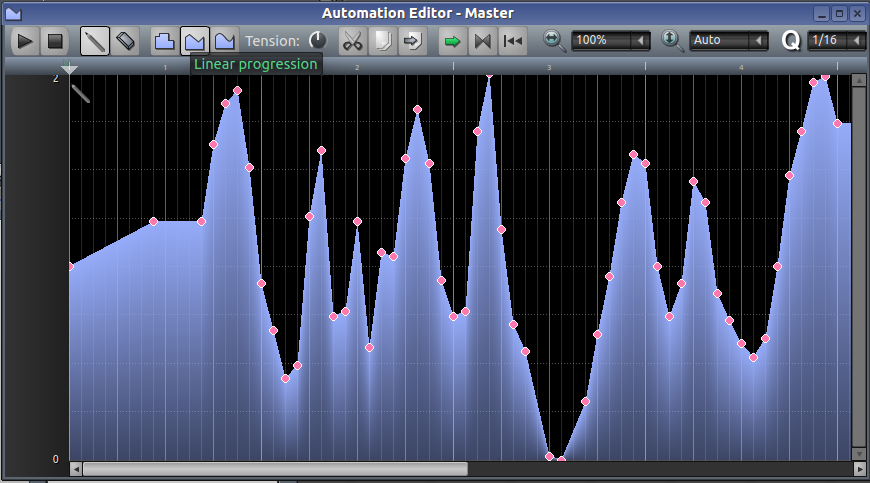LMMS: How to record and edit automation
Introduction
Hi, my name is Chan Pei Keong and I live in Kuala Lumpur, Malaysia. I am currently majoring in Software Engineering and I aspire to become a game developer in the future.
As part of the assignment for Week 3 in Introduction to Music Production at Coursera.org, I will be showing you how to record and edit automation in LMMS (1.1.1). Let's get right into it.
Automation in LMMS
Linux MultiMedia Studio (LMMS) is arguably the single most intuitive DAW (Digital Audio Workstation) that I have ever used, and it is currently my favourite music tool as well. Having used Ardour and bought FL Studio, I'll say that LMMS has the best work-flow of them all, similar to FL Studio except less cluttered. It still doesn't have enough plug-ins or samples to justify its usefulness, but the ease of use are enough to convince you.
 |
| (LMMS 1.1.1) The interface are very similar to FL Studio and much simpler |
Automation are so simple in LMMS that you wouldn't believe that it is much more simpler to record and edit the automation compared to other DAW. In the previous versions (before 1.1.0), there was no recording function for automation, and it is only available in the latest version, which is 1.1.0. I will show you how easy it is to record an automation.
Recording Automation
1) First, create an automation track simply by pressing on the "Add automation track":
2) Then, click on the first bar in the automation track to create an automation pattern:
3) Drag the end of the pattern to extend it:
4) Drag any controls/knobs that you want to be automated into the pattern using Ctrl+Left Click and drag:
5) Right-click on the automation pattern and select "Set/Clear record":
6) Now, you are ready to record, just press the play button and start turning the control/knob to record it:
Editing Automation
1) Double click on the pattern to open up the automation editor:
2) To edit any nodes/points, just drag on it:
3) To add any nodes/points, just left click on an empty space (no nodes):
4) To delete any nodes/points, just right click on them:
5) You can change the progression type at the top of the editor:
 |
| There are three different progressions |
 |
| Discrete progression |
 |
| Linear progression |
 |
| Cubic Hermite progression |
6) You can also change tension for the Cubic Hermite progression with the Tension knob as well:
Reflection
That's all it takes to record and edit automation on LMMS. In just a few steps, you can already create an automation pattern that achieves the same result as any other professional DAWs. From here on out, you can hook up any controls/knobs to your midi device and you are good to go.
I am really happy that they have implemented this feature in the latest LMMS version 1.1.1, which is why I plan on creating my assignment on this topic. I hope that LMMS will continue to grow into a professional DAW, just like FL Studio in the future.











Comments
Post a Comment